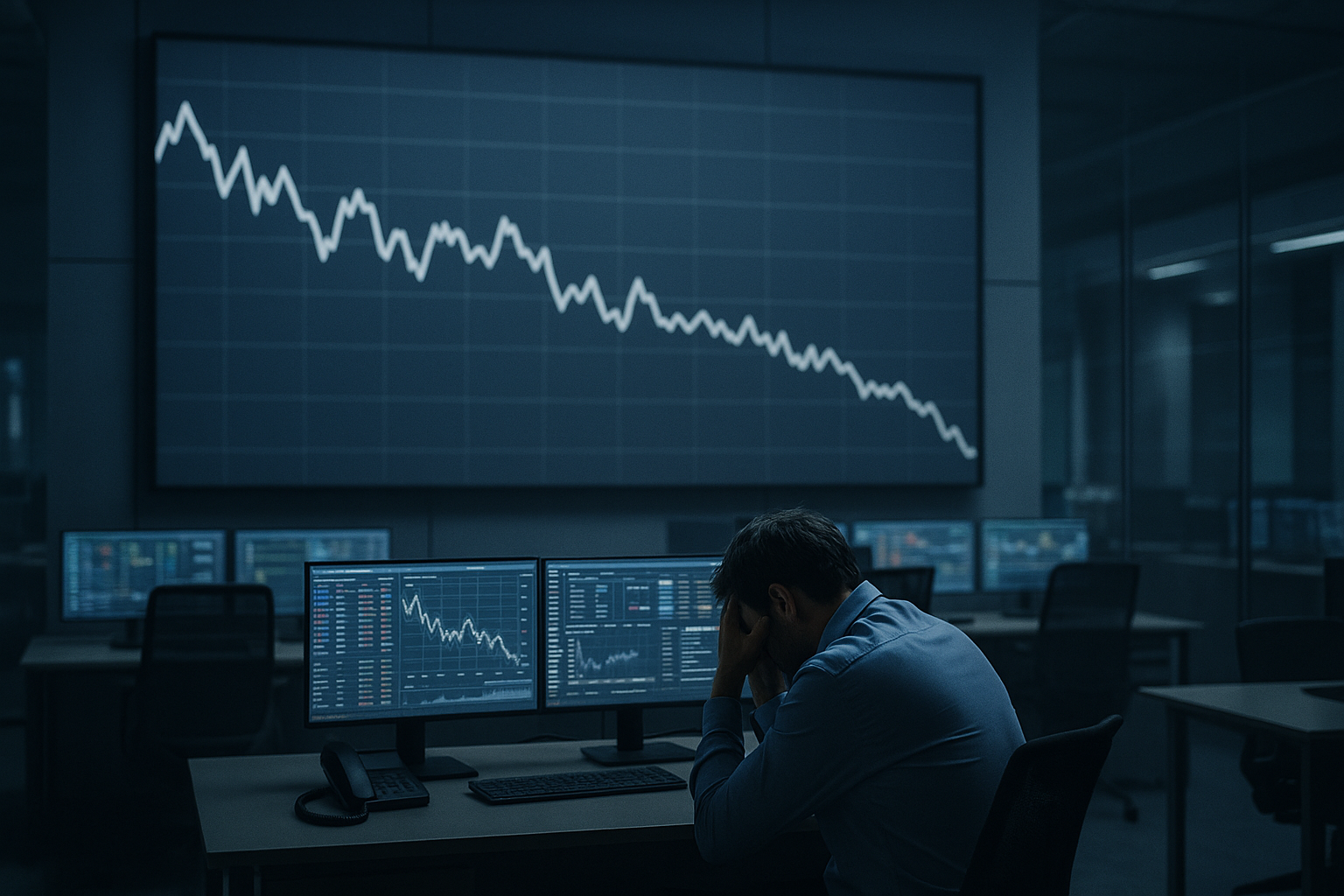The trading floors these days have a distinctly gloomy vibe. Ask any portfolio manager how things are going and you'll likely get that automatic "fine" response—you know the one, delivered with eyes that tell a completely different story.
What we're seeing isn't a crash. No, that would be too straightforward. Instead, we're watching this maddening pattern where the market takes a modest step forward only to retreat a step and a half backward. Build up some gains? Don't get too comfortable—they'll be chiseled away before you know it.
I've been calling this the "Erosion Effect" in conversations with colleagues. It's this slow, agonizing wearing down of positions that tests not just your investment thesis but your very sanity. Unlike dramatic crashes—which, oddly enough, often present clear buying opportunities—this gradual deterioration leaves investors in a perpetual state of uncertainty.
Take last week. By all accounts, we had decent economic numbers. The Fed seems to have settled into its "higher for longer but we see the exit ramp" stance. Corporate earnings? Not great, not terrible. Yet the market found every excuse to sell off anyway.
"Markets exist to inflict the maximum amount of psychological damage on the maximum number of participants," a veteran trader told me back in 2016 during a similar grinding period. Harsh, but there's wisdom there.
The Tricky Psychology of It All
Here's the thing about us humans—we're wired to spot patterns. Our cave-dwelling ancestors needed this skill to avoid becoming some predator's lunch. But in investing? This tendency often leads us astray, creating what I think of as "pattern hallucination" rather than recognition.
When your portfolio keeps losing ground day after day, your brain desperately constructs explanations. Maybe it's election jitters. Or perhaps those geopolitical hotspots. Could be the deflating AI bubble. Or maybe—just maybe—it's random market noise that we're frantically trying to make sense of.
(The old saying that markets climb a wall of worry seems quaint now. These days, we're all trapped in some endless anxiety tunnel, feeling around in the dark for the exit.)
A Strange Liquidity Situation
Something peculiar is happening with market liquidity right now. On paper, there's mountains of cash sitting idle—trillions in money market funds just waiting to be deployed. Yet actual market liquidity—the ability to execute substantial trades without sending prices haywire—remains surprisingly thin.
It's like having an Olympic-sized swimming pool but only a cocktail straw to draw water from it. The result? Even modest selling pressure can disproportionately impact prices.
We've Been Here Before (Though That Doesn't Make It Better)
Look, market history is full of these frustrating sideways periods. From 1966 to 1971, the Dow basically spun its wheels around the 900-point mark, repeatedly teasing breakouts that fizzled. Investors who endured that period described the same emotional exhaustion many are feeling now.
More recently? The 2015-2016 stretch saw the S&P 500 trapped in an 18-month sideways pattern that gradually wore down investor resolve.
Having covered markets for years, I can tell you these periods always feel eternal when you're in them. They're not, of course, but that's cold comfort when watching your gains slowly disappear.
When Does This End?
The honest (and frustrating) answer is: nobody knows for sure. Markets don't follow convenient schedules.
Historically though, these grinding periods typically resolve in one of three ways:
First, there's the capitulation scenario—enough investors finally throw in the towel, selling reaches a fever pitch, and... that creates the bottom.
Then there's the catalyst path—some external event finally breaks the pattern. Could be the Fed making a decisive move, a major geopolitical situation resolving, or an unexpected economic development.
Finally, there's what I call the stealth reversal—the market simply starts climbing again for no obvious reason, leaving everyone who reduced exposure kicking themselves.
With the election looming and the Fed likely moving toward rate cuts sometime relatively soon, my gut says we're looking at the catalyst scenario. But markets love to surprise us, don't they?
Some Perspective (Because We Need It)
Step back and breathe. Despite this frustrating erosion, most major indices still show significant gains from their October 2022 lows. This doesn't mean we should celebrate watching our gains shrink, but it suggests we're experiencing a correction within a broader uptrend rather than something more sinister.
The market's emotional pendulum always swings between extremes. Periods of euphoria never last forever—neither do stretches of grinding frustration. Eventually, the market will pick a direction. It always does.
Until then? Sometimes that old Wall Street wisdom rings truest: "Don't just do something, sit there." Preserving both capital and sanity might be victory enough for now.
